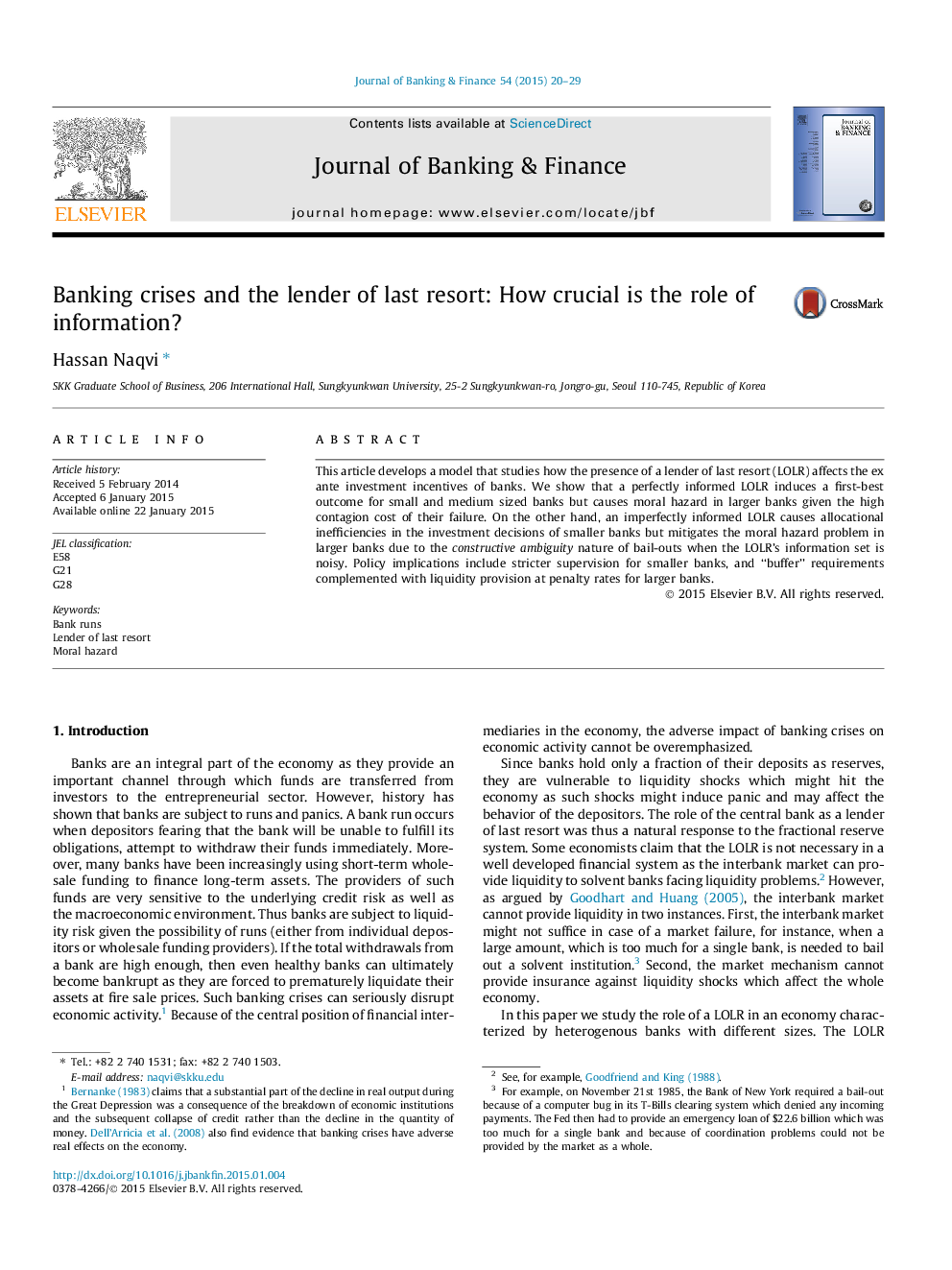| Article ID | Journal | Published Year | Pages | File Type |
|---|---|---|---|---|
| 5088651 | Journal of Banking & Finance | 2015 | 10 Pages |
Abstract
This article develops a model that studies how the presence of a lender of last resort (LOLR) affects the ex ante investment incentives of banks. We show that a perfectly informed LOLR induces a first-best outcome for small and medium sized banks but causes moral hazard in larger banks given the high contagion cost of their failure. On the other hand, an imperfectly informed LOLR causes allocational inefficiencies in the investment decisions of smaller banks but mitigates the moral hazard problem in larger banks due to the constructive ambiguity nature of bail-outs when the LOLR's information set is noisy. Policy implications include stricter supervision for smaller banks, and “buffer” requirements complemented with liquidity provision at penalty rates for larger banks.
Related Topics
Social Sciences and Humanities
Economics, Econometrics and Finance
Economics and Econometrics
Authors
Hassan Naqvi,
